| In the afternoon we went to the botanical garden as we
had come across almost no others elsewhere, and this one advertised itself
as displaying mainly plants native to this region. Although we have been in
a number of plazas and gardens with nice plantings, it was an opportunity to
get closer to some plants we had really only seen from a distance as we
drove past. | 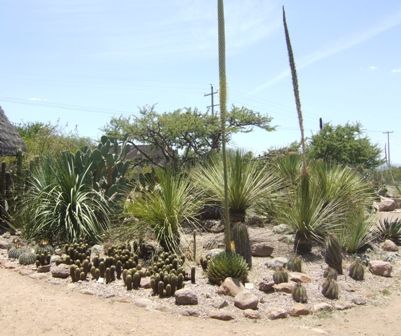 |
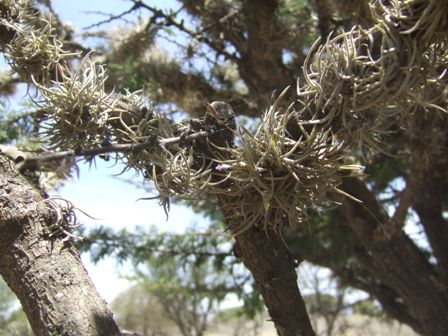 |
This is a good example - a tree that looks half dead but it is covered with
something we pay quite highly for back home: air plants. They take their
nourishment from the air and only use the tree for support, so they are not
the cause of the tree's state of health but probably a result. |
| The bits of garden we had seen before, at Teotihuacán
for example, seemed like half-hearted attempts, the plants looking neglected
and with no labelling. This botanical garden is being taken seriously, with
an elegant glass house to keep the dust and the worst of the sun away, and
while we were there three gardeners were busy trimming and tidying. Most of
the plants were clearly labelled. | 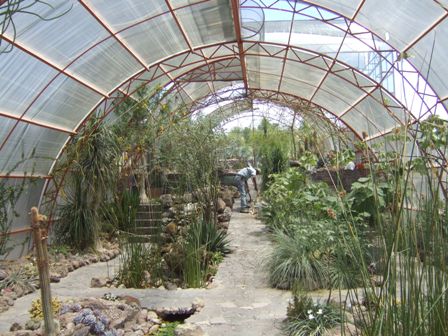 |
Perhaps because of the protection some of the cacti
were still in flower, and it was interesting to see the range of sizes,
colours and shapes, and even the textures vary, from waxy to papery to
frilly.
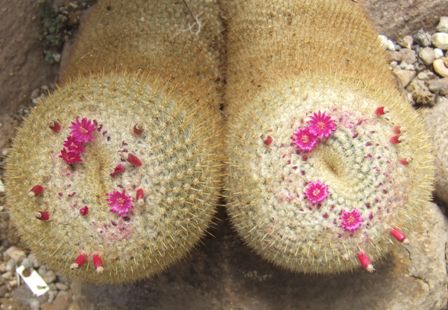 |
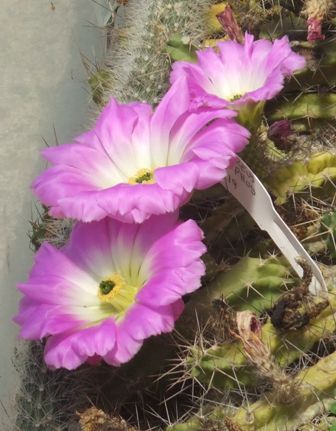 |
The cacti themselves also vary enormously, in size,
growth habit (horizontal or upright), colour (yellow-green, blue-green, even
red), and shape (anything from short and round to tall and thin, with or
without branches).
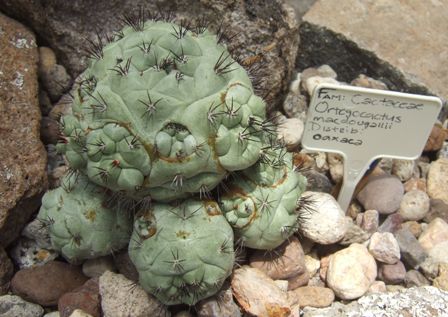 |
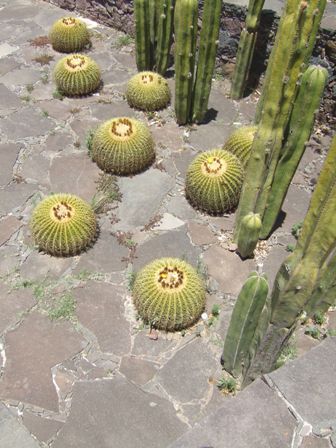 |
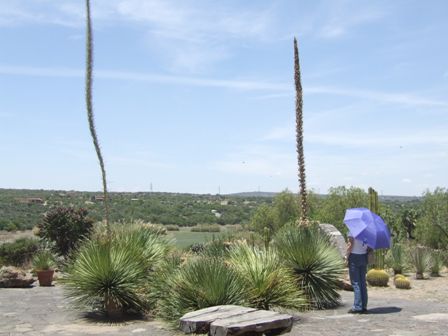 |
The agave family has some really striking flower forms, although these
spikes had flowered several weeks before. Jan is admiring these, and doing
what Mexicans often do - using an umbrella as a parasol. |
| Another agave, just perfect in form. | 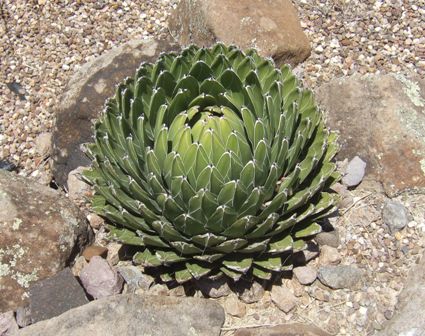 |
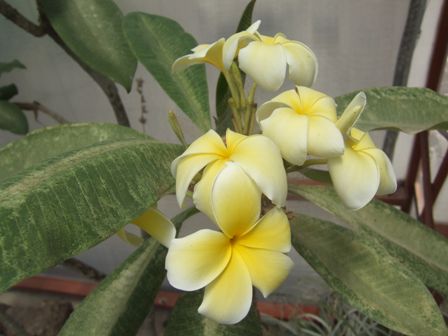 |
Not all the flowers were on the cacti. This is a tree in the glasshouse,
though we couldn't see a label for it. The flowers are about 2 inches
across. |
| And succulents flower too, though this one was the
only one we saw in flower and they weren't quite fully open. The plants also
come in a range of colours; there were even too different black ones, but
neither showed up well against the soil in the photos. | 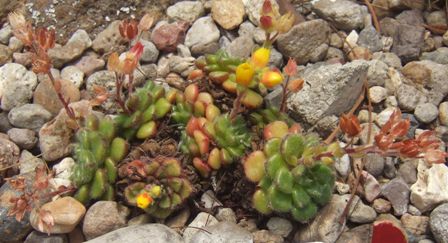 |
| The botanical garden is about a mile outside the town,
on a hillside but including this wetland area which is becoming increasingly
important as a wildlife and bird habitat. It is fed by a spring, the Charco
del Ingeniero. | 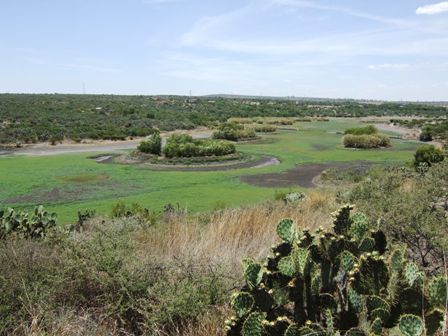 |
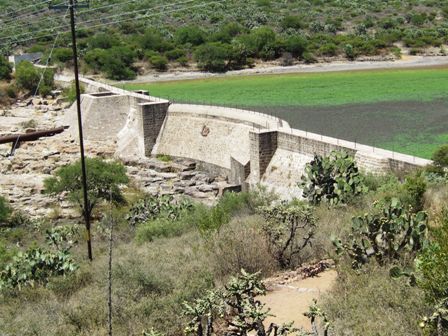 |
Las Colonias dam was built at the beginning of the twentieth century. The
water was piped down to La Aurora, a textile factory, where it was used in a
pioneer project to generate electricity. The dam has now largely silted up
and the iron pipe is broken, but the spring still supplies some of the water
for the garden. |
| The garden also provides a traditional and modern
ceremonial area for local peoples. This is Four Winds Plaza, a ritual and
scenic space inspired by the Tolteca-Chichimeca codex. The tall tower is the
suchil, a traditional religious offering which had its origins in the
flower-covered mat used to carry warriors who died in combat during the
fight against the Spanish conquistadors in the sixteenth century. The large
star-shaped mosaic contains figures evoking the four natural resources:
flora, fauna, earth and water, and the star shape itself represents the
solar eclipse of 1991, the date the garden was founded. | 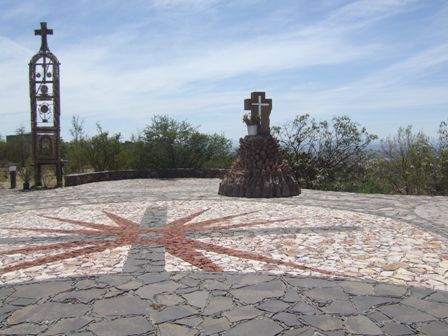 |
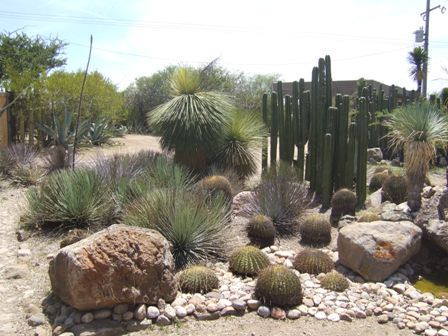 |
A final view of the formal planted area near the exit. It was an enjoyable
visit, but the afternoon was hot and dry so we were ready to leave and go
back to some shade and a long cool drink. |
|